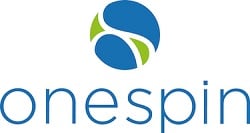Experts at the Table: With the initial standard in place, what can we expect in terms of broadening it’s scope to other domains and applications?
It has been a year since Accellera’s Portable Test and Stimulus Specification became a standard. Semiconductor Engineering sat down to discuss the impact it has had, and the future direction of it, with Larry Melling, product management director for Cadence; Tom Fitzpatrick, strategic verification architect for Mentor, a Siemens Business; Tom Anderson, technical marketing consultant for OneSpin Solutions; and Dave Kelf, chief marketing officer for Breker Verification Systems. What follows are excerpts from that conversation.
SE: The committee started with some initial expectation about applications and clearly it is now getting used in different areas. Have you started to identify new features or capabilities that would enhance the standard?
Fitzpatrick: Nothing that is that surprising. What we are working on for 1.1 is stuff that we knew we wanted to do that didn’t make it into 1.0. So far, there hasn’t been a huge ‘ah hah’ moment. We are confident that we are going in the right direction.
Anderson: It is still quite early. The composition of the working group doesn’t extend to people doing test. While there were a few that expressed interest, they didn’t last long. But if we are now seeing users moving into those worlds, there may be additional things that the standard could be doing to help them.
Kelf: By the same token, embedded software. We knew that we would be running micro-kernels or bringing software applications drivers in, and I am sure we are all seeing that. But I would expect to see a lot more of that and the API necessary to open into the software world.
Melling: AMD has presented about how they are using PSS, and they have a software layer they are using. It is being run below the micro-kernel layer and all of the PSS threads that are being operated. So we are seeing exactly that. They want to re-use their software layer here.
Kelf: Right, we are starting to see that now, and AMD is a great example because they are far ahead with the virtual and hybrid platform mode running up front. It is like a thin Linux.
Anderson: PSS can verify software in an indirect manner. There is often a lot of code in common, maybe at the driver level, maybe more sophisticated than what you are sharing between traditional bring-up and testing and validation in the PSS flow.
Kelf: Testers, virtual platforms…
Anderson: The more code you share, the more you validate it.




